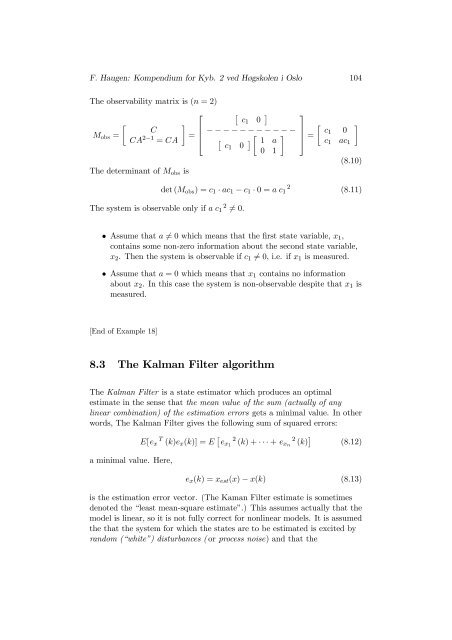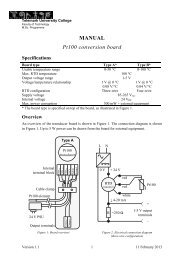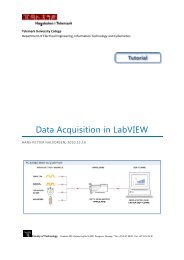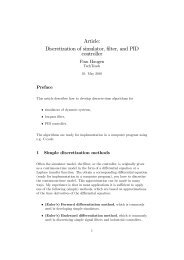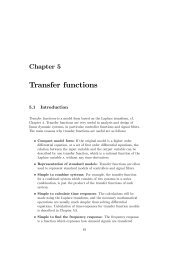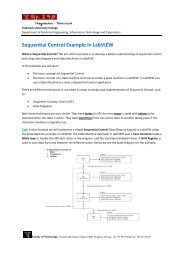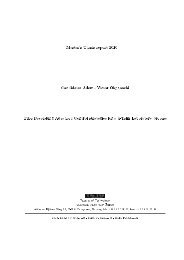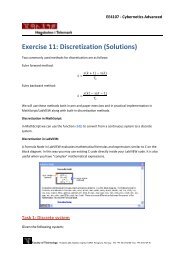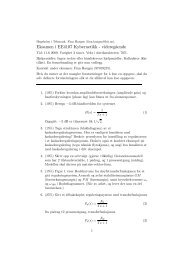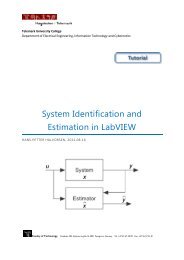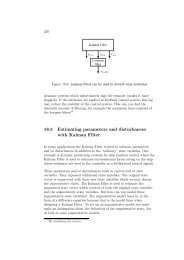State estimation with Kalman Filter
State estimation with Kalman Filter
State estimation with Kalman Filter
Create successful ePaper yourself
Turn your PDF publications into a flip-book with our unique Google optimized e-Paper software.
F. Haugen: Kompendium for Kyb. 2 ved Høgskolen i Oslo 104<br />
The observability matrix is (n =2)<br />
⎡ £<br />
·<br />
¸<br />
c1 0 ¤ ⎤<br />
· ¸<br />
C<br />
M obs =<br />
CA 2−1 = ⎢ −−−−−−−−−−−<br />
= CA ⎣ £<br />
c1 0 ¤ · ¸ ⎥<br />
1 a ⎦ = c1 0<br />
c 1 ac 1<br />
0 1<br />
(8.10)<br />
The determinant of M obs is<br />
det (M obs )=c 1 · ac 1 − c 1 · 0=ac 1<br />
2<br />
(8.11)<br />
The system is observable only if ac 1 2 6=0.<br />
• Assume that a 6= 0which means that the first state variable, x 1 ,<br />
contains some non-zero information about the second state variable,<br />
x 2 . Then the system is observable if c 1 6=0,i.e.ifx 1 is measured.<br />
• Assume that a =0which means that x 1 contains no information<br />
about x 2 . In this case the system is non-observable despite that x 1 is<br />
measured.<br />
[End of Example 18]<br />
8.3 The <strong>Kalman</strong> <strong>Filter</strong> algorithm<br />
The <strong>Kalman</strong> <strong>Filter</strong> is a state estimator which produces an optimal<br />
estimate in the sense that the mean value of the sum (actually of any<br />
linear combination) of the <strong>estimation</strong> errors gets a minimal value. In other<br />
words, The <strong>Kalman</strong> <strong>Filter</strong> gives the following sum of squared errors:<br />
a minimal value. Here,<br />
E[e x T (k)e x (k)] = E £ e x1 2 (k)+···+ e xn 2 (k) ¤ (8.12)<br />
e x (k) =x est (x) − x(k) (8.13)<br />
is the <strong>estimation</strong> error vector. (The Kaman <strong>Filter</strong> estimate is sometimes<br />
denoted the “least mean-square estimate”.) This assumes actually that the<br />
model is linear, so it is not fully correct for nonlinear models. It is assumed<br />
the that the system for which the states are to be estimated is excited by<br />
random (“white”) disturbances ( or process noise) and that the


